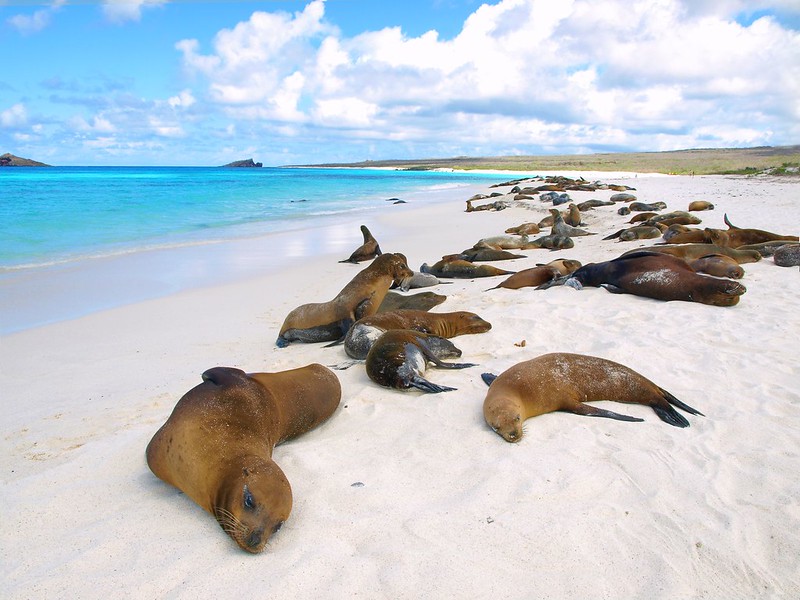Day 1 (Monday) : Gianni Arismendy Environmental Interpretation Centre
AM: Flight to Galapagos
This day, you will fly to the Galapagos Island. Due to the Galapagos Government, a fee of 20 USD must be paid for the migration control card.
Once in San Cristobal, passengers must go through an inspection point at the airport to make sure that no foreign plants or animals are being introduced to the archipelago. Also, this inspection point is where passengers have to pay for the entrance to the Galapagos National Park under the following parameters:
As of September 2024, Foreign Passengers $200 and Children $100 (under 12 years old).
Later on, your guide will pick you up, and will carry your luggage to the bus. Passengers will arrive at the Catamaran Seaman Journey on a motorized boat called a panga.
PM: Gianni Arismendy Environmental Interpretation Centre
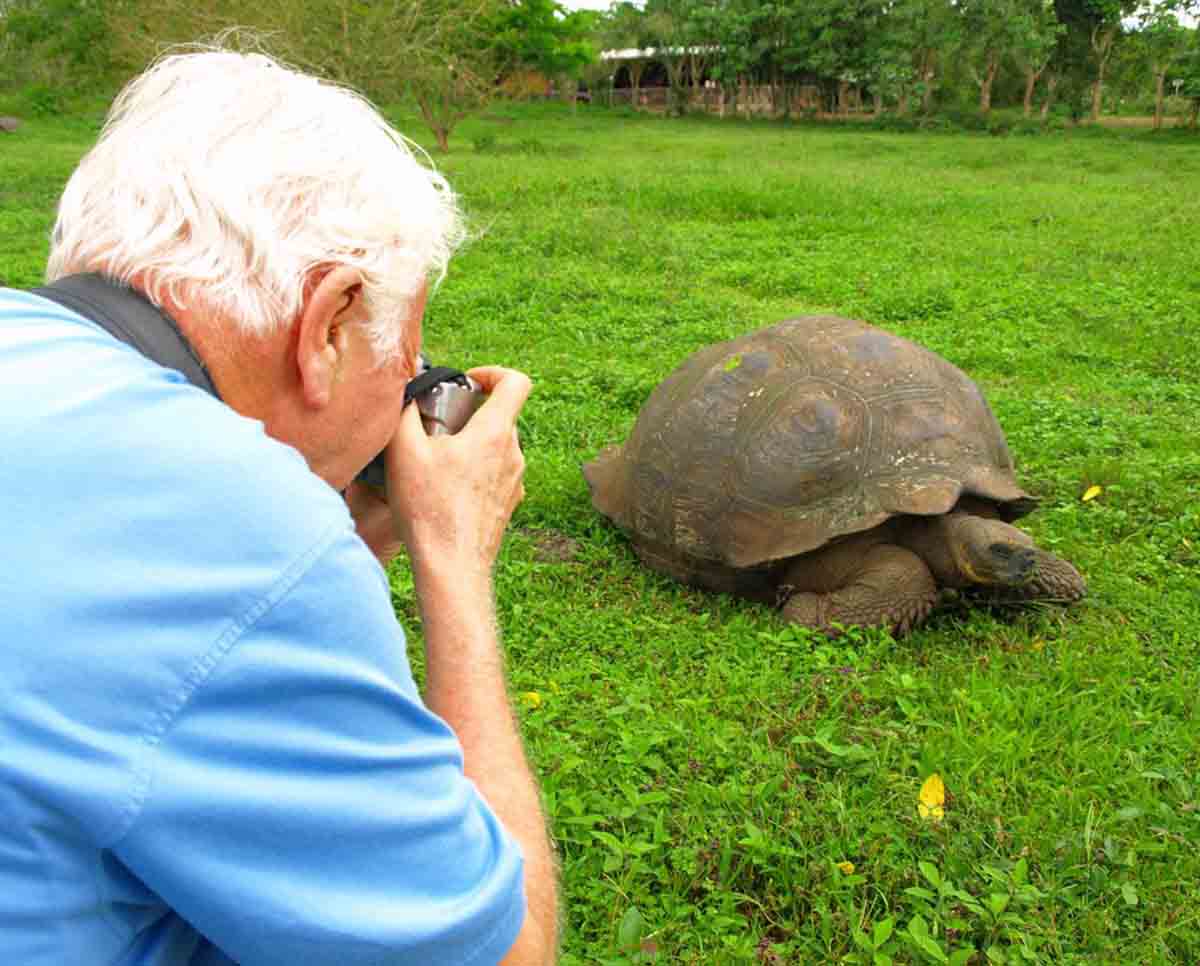
© Latin trails
This is an interpretation center with exuberant gardens and stunning ocean views. Visitors at the interpretation center can learn a lot about the geological and human history of the islands, conservation facts and natural history. This is the oldest museum of Natural History in the Galapagos Islands which attempts to preserve the archipelago. It is indeed inspiring and motivating to watch and learn about all of their research and attempts.
Day 2 (Tuesday) : San Cristobal Island: Punta Pitt & Lobos Island
AM: San Cristobal Island, Punta Pitt
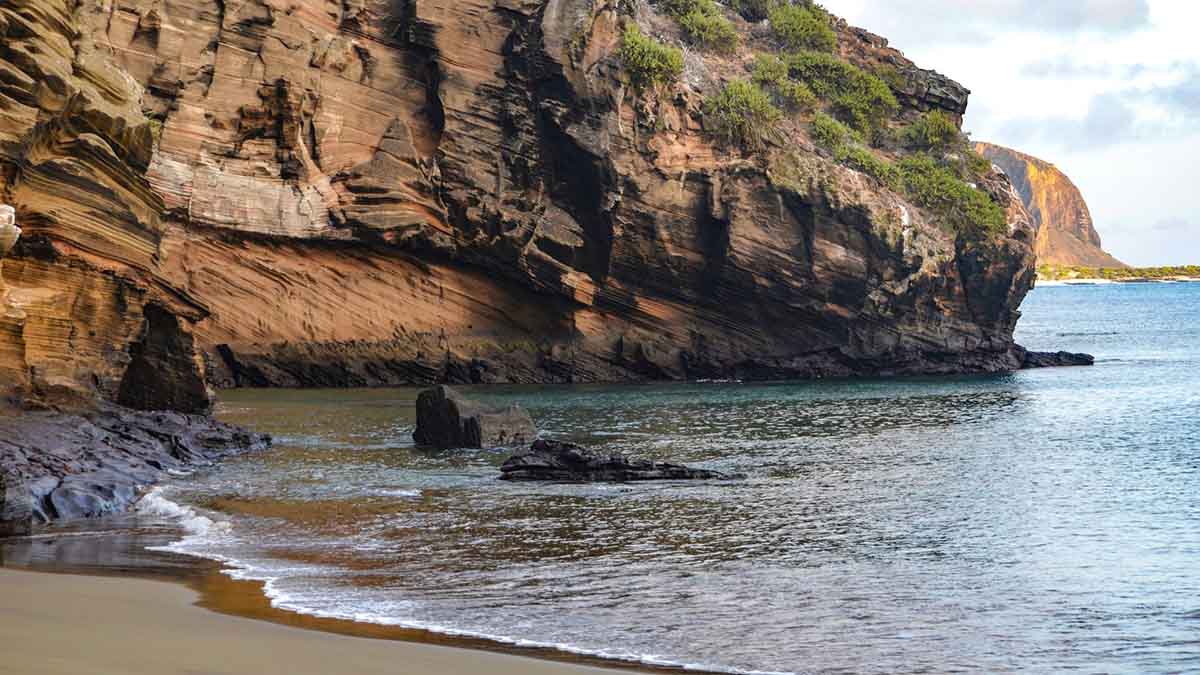
Photo: marktucan
Punta Pitt is located at the eastern end of the island of San Cristobal, with a beach of approximately 90 metres and several natural viewpoints overhanging an eroded hill of volcanic tuff.
A 1,400-metre trail leads from the beach called Oliviana to the top of the hill, which is coloured by different types of lava.
The strong winds present on the hill have caused a natural erosion that produces fantastic and memorable landscapes that look like something out of a science fiction movie.
A beautiful olive yellow colour with bright crystals from the erosion of lava and shells paints the sand of Oliviana beach, where sea lions lie in the sun watching the flight of frigate birds, pelicans, herons and seagulls.
Pitt islet is one of the few places where the three species of boobies (blue-footed, red-footed and masked) and the two species of frigate birds can be observed in the same area.
PM: Lobos Island, San Cristobal Island

© Latin Trails
Isla Lobos is a small, flat islet. The name Isla Lobos is given to it as it is home to several sea lions, which frolic on the beach; their brown fur stands out against the white sand. Isla Lobos is approximately 20 minutes by boat (10 kilometres) from Puerto Baquerizo Moreno on San Cristobal Island.
Classified as a tourist diving site, it has 2 piers from which tourists can explore the bottom of the ocean accompanied by sea lions.
In its waters, a protected channel offers a fantastic place for snorkelling. An 850-metre long trail runs along the island, connecting the two piers. The estimated time of the walk is one hour, during which you can observe coastal vegetation of saltwater-tolerant plants. Its name is due to the two species of sea lions that inhabit it. The sea lions are related to the California sea lions, while the two-furred sea lions, known as fur seals, have their origins in Antarctica.
Day 3 (Wednesday) : Española Island: Osborn Islet, Gardner Bay & Suarez Point
AM: Española Island, Gardner Bay
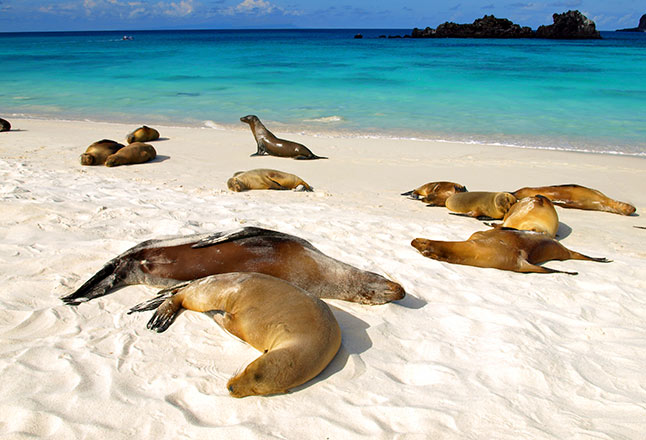
Located on the north-eastern coast of Hood Island, Gardner Bay offers an excellent beach for relaxing, swimming, and even kayaking, along with the opportunity to observe sea lions (Zalophus wollebaki). Here, we can also spot sharks in the crystal-clear ocean waters.
At this location, you can observe three species of Darwin finches:
- A subspecies of the large-billed cactus finch (Geospiza fuliginosa), which resembles the large-billed terrestrial finch;
- The small-beaked ground finch (Geospiza fuliginosa); and
- The singing finch (Certhidea Olivacea), another endemic subspecies.
Both resident and migratory birds can be observed in this area.
PM: Suarez Point
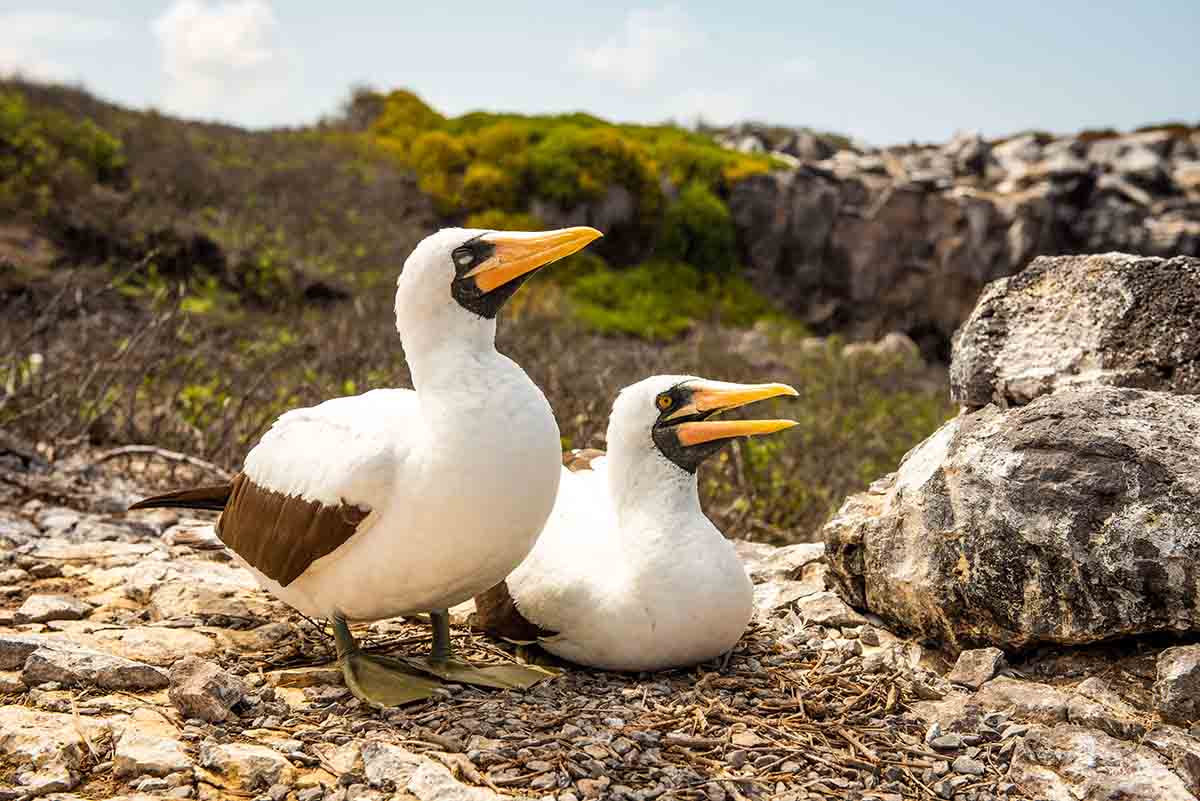
© Latin Trails
This area is excellent for spotting blue-footed boobies, albatrosses, and Nazca boobies. Situated on the oceanfront, it is a beautiful site where the large waved albatrosses use the cliff as a launching pad. The famous attraction here is the magnificent blowhole, which spurts water high into the air, reaching heights of at least 50 to 75 meters. This site offers wonderful photography opportunities.
Day 4 (Thursday) : Floreana Island: Cormorant Point, Champion Islet, Post Office Bay & Baroness Lookout
AM: Cormorant Point, Champion Islet
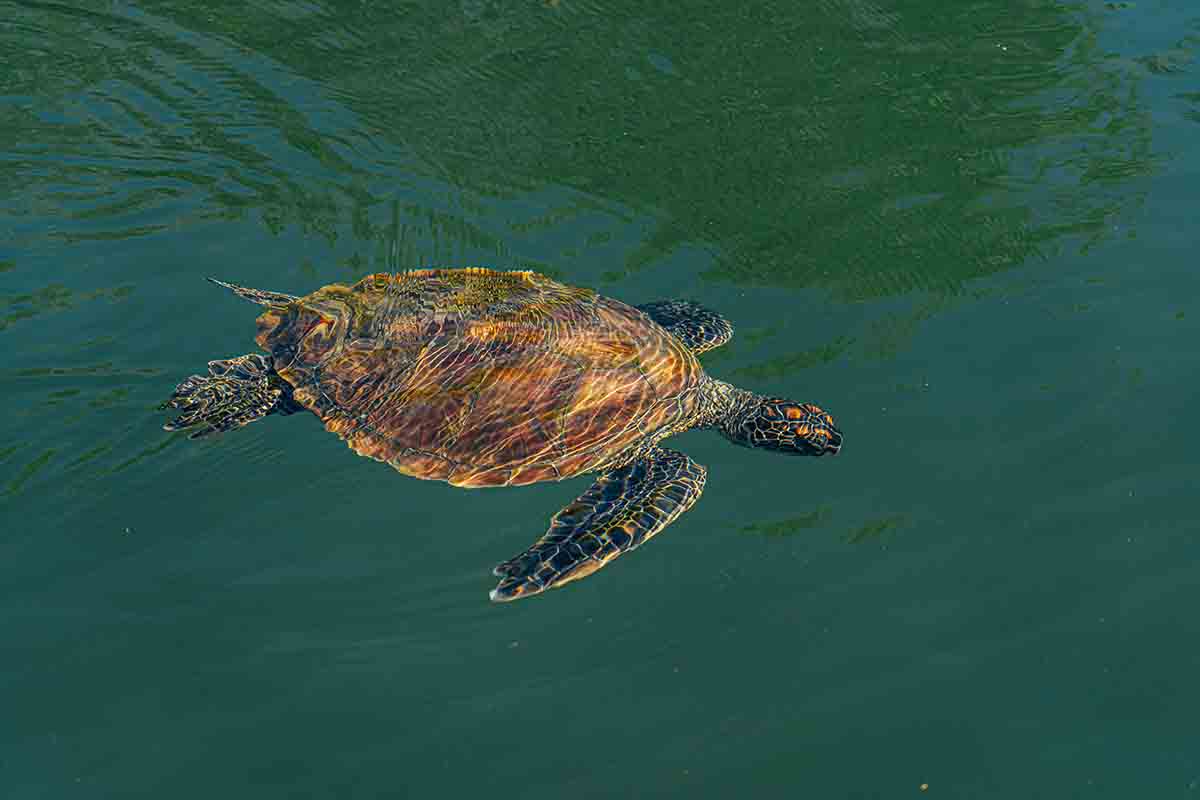
© Latin Trails
This site probably offers the best flamingo lagoon in the Galapagos; it is also one of the largest in the islands. It’s situated between two tuff lava cones that give the area a special atmosphere. There are various species of shorebirds to observe besides flamingos; the most frequent are common stilts, white-cheeked pintail ducks, and other migratory birds. It is very interesting to see the two distinct beaches: “The Green Beach” (due to its high percentage of olivine crystals in the sand) and the “Flour Sand Beach” which is made up of coral.
After the interesting walk, the group is taken to Champion Islet, a great place to enjoy snorkelling and underwater wildlife. Some of the animals that can be seen are sea turtles, sea lions, and multiple fish thanks to the nearby coral reef.
PM: Post Office Bay
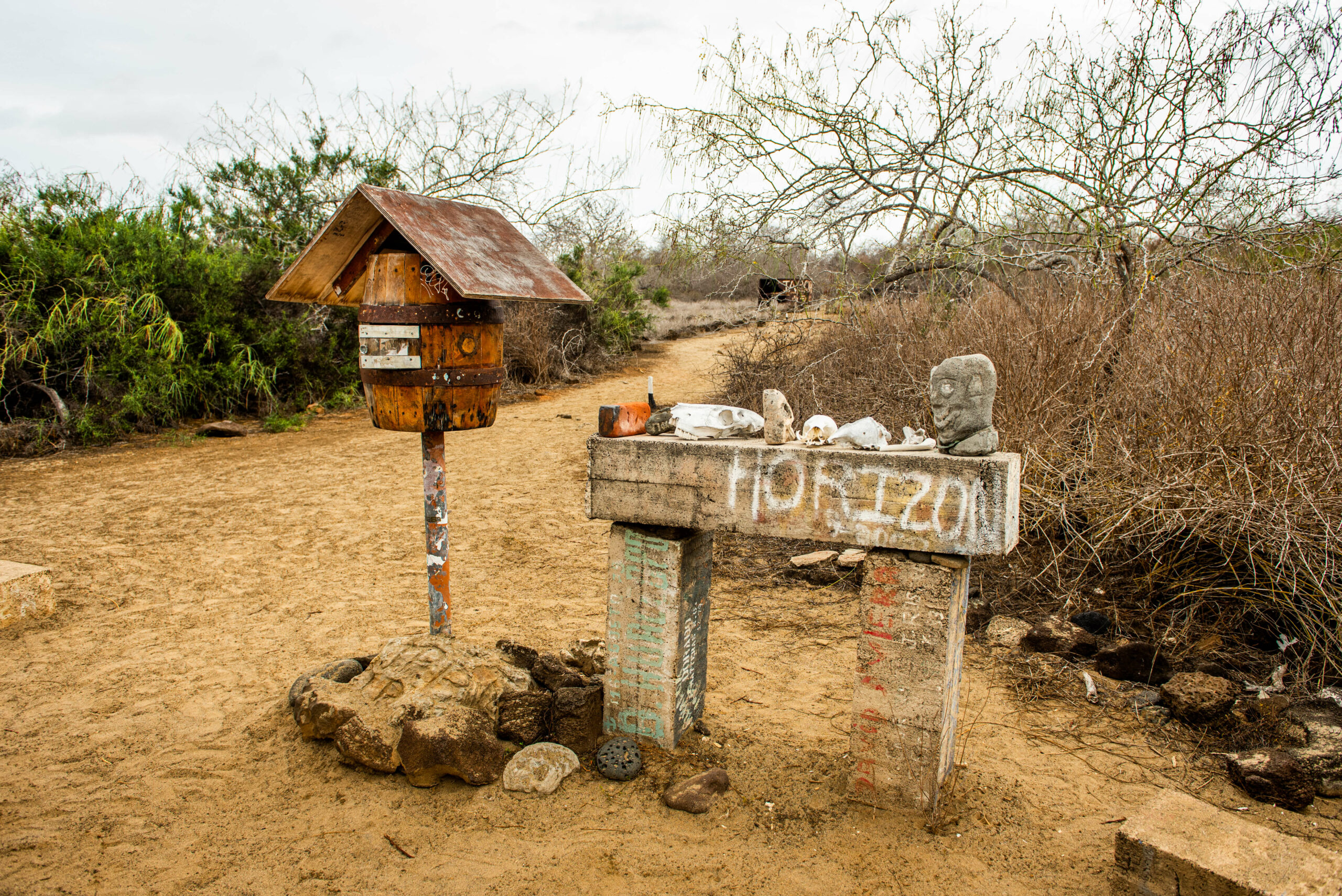
© Latin Trails
Historically, this site is the location of a wooden barrel that was placed in the 18th century by the crew of a whaling ship. It has been used since this time by mariners and tourists as a post office. The idea is to carry letters or postcards to their destination by hand. Besides, this site was the landing area for some of the first colonists. This day’s afternoon is thought to be a relaxing time for visitors to enjoy the beach and the beauty of Galapagos.
Day 5 (Friday) : Fausto Llerena Nurturing Centre
AM: Fausto Llerena Breeding Centre
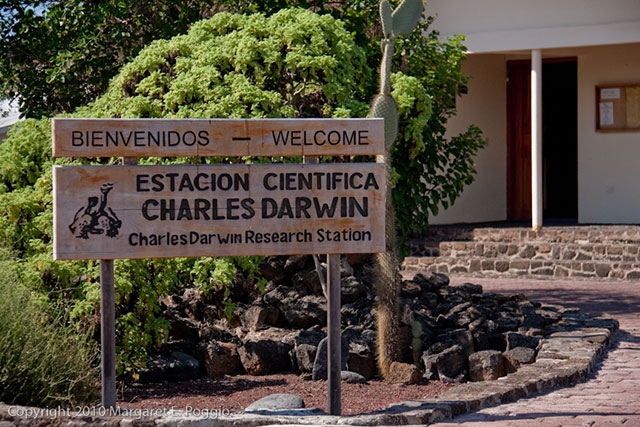
© Latin Trails
The Fausto Llerena Breeding Centre is located in the Galapagos National Park, on Charles Darwin Avenue, at a distance of 1 km from the Gus Angermeyer Tourist Pier. After a 40-minute walk, the attraction is part of the network of visitor sites of the Charles Darwin Foundation.
The visit starts at the information booth of the Galapagos National Park Service (SPNG). The trail leads to the Van Straelen Interpretation Centre, then to the breeding centre. From there, an elevated circular path begins, made of wood, from where you can observe Lonesome George and the tortoises of Española Island. It ends at the tortoise exhibition corral.
After the visit, you will be transferred to the Baltra airport in time for your flight back to the mainland.
- Best flamingo lagoon, unique beaches, and diverse shorebirds.
- Enjoy snorkeling with sea turtles, sea lions, and vibrant underwater wildlife.
- Spot blue-footed boobies, albatrosses, and Nazca boobies, witness the magnificent blowhole.
- Pay attention to the meeting details provided upon arrival in Galapagos.
- Wear comfortable clothing suitable for hot weather. Remember that Galapagos has a humid climate and its ambient temperature is above 22 degrees Celsius.
- Take your identity card or passport with you, especially on your transfers in and out of the Galapagos Islands.
- Remember that traveling by cruise ship can cause seasickness, we recommend that you take sea sickness pills with you. These can only be taken once a day.
- Be aware of the environmental impact and follow the national park’s rules on conservation and respect for nature.
It is advisable to bring a windbreaker jacket for when you want to enjoy the best view of the Galapagos Islands in our open air area.
Within our excursions or water activities the effort is minimal compared to the great experience you will have in the Galapagos Islands.

